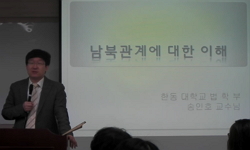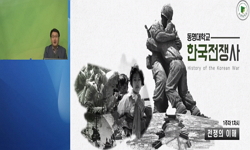Examined in this article is how Panmunjom(the Joint Security Area) emerged as a global sightseeing spot, and a battle ground for state propaganda between South and North Koreas. Such emergence was during the 1950s and ’60s, after the Korean war, and...
http://chineseinput.net/에서 pinyin(병음)방식으로 중국어를 변환할 수 있습니다.
변환된 중국어를 복사하여 사용하시면 됩니다.
- 中文 을 입력하시려면 zhongwen을 입력하시고 space를누르시면됩니다.
- 北京 을 입력하시려면 beijing을 입력하시고 space를 누르시면 됩니다.

1950~60년대 판문점 개방과 남북한의 체제 선전 = Panmunjom’s Opening to the Public in the 1950s and ’60s, and South and North Koreas’ Propagation of States
한글로보기부가정보
다국어 초록 (Multilingual Abstract)
Panmunjom was where, during the Korean War, negotiations for the armistice took place. And after that, it was also used as an office space for the Military Armistice Commission, and the Neutral Nations Supervisory Commission. It was the only place where both Koreas could officially meet with each other, so ever since the armistice in 1953, reporters and civilian visitors continued to visit the place. In the 1960s Panmunjom was even opened as a tourist attraction, through a decision that was actively pushed by not only the South Korean government and its policy of tourism promotion, but also the UN Command’s view of Panmunjom as an effective tool for propaganda. Later, other facilities like the “House of Freedom” and Panmun-gak were constructed as well, further sealing Panmunjom’s role and status as a propaganda space.
With the Panmunjom opened, all sorts of unofficial encounters between visitors from both Koreas continued. They were of course all under control and close monitoring of the state authorities, but they were also incidents that could ultimately cause some cracks in the once rigid Cold War order.
Examined in this article is how Panmunjom(the Joint Security Area) emerged as a global sightseeing spot, and a battle ground for state propaganda between South and North Koreas. Such emergence was during the 1950s and ’60s, after the Korean war, and occurred in the wake of both Koreas’ competition with each other, in the Cold War political climate. Naturally there were also several ‘unofficial’ cases of contacts between South and North Korean visitors happening here and there, enabled by the Panmunjom’s opening to the public. That is examined here as well, so that we could ascertain the historic meaning of such encounters.
Panmunjom was where, during the Korean War, negotiations for the armistice took place. And after that, it was also used as an office space for the Military Armistice Commission, and the Neutral Nations Supervisory Commission. It was the only place where both Koreas could officially meet with each other, so ever since the armistice in 1953, reporters and civilian visitors continued to visit the place. In the 1960s Panmunjom was even opened as a tourist attraction, through a decision that was actively pushed by not only the South Korean government and its policy of tourism promotion, but also the UN Command’s view of Panmunjom as an effective tool for propaganda. Later, other facilities like the “House of Freedom” and Panmun-gak were constructed as well, further sealing Panmunjom’s role and status as a propaganda space.
With the Panmunjom opened, all sorts of unofficial encounters between visitors from both Koreas continued. They were of course all under control and close monitoring of the state authorities, but they were also incidents that could ultimately cause some cracks in the once rigid Cold War order.
동일학술지(권/호) 다른 논문
-
계속되는 역사교육의 정치도구화, 퇴행하는 역사교육 논쟁, 그리고 역사학계
- 한국역사연구회
- 이신철
- 2022
- KCI등재
-
- 한국역사연구회
- 김도민
- 2022
- KCI등재
-
- 한국역사연구회
- 김도민
- 2022
- KCI등재
-
- 한국역사연구회
- 김준형
- 2022
- KCI등재




 DBpia
DBpia




